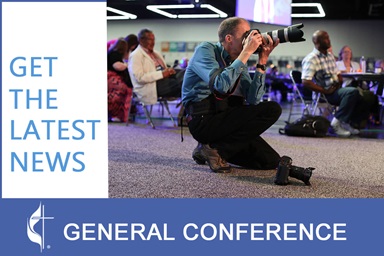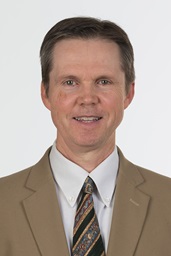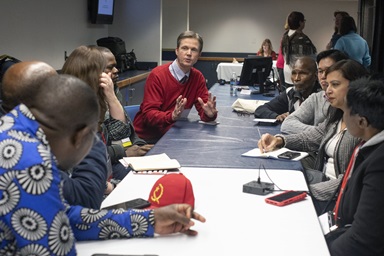The interfaith Charlottesville Clergy Collective has been a primary force containing the violence that occurred in the picturesque university town this summer.
First, there was July's rally of the Ku Klux Klan. The event drew about 50 Klan members and more than 1,000 counter-demonstrators.
In August, white supremacists rioted and one person, Heather Heyer, 32, died when a driver intentionally drove into a crowd of counter-demonstrators. A suspect, James Fields Jr., has been charged with second-degree murder and with the “malicious wounding” of others. A group of white supremacists also severely beat Deandre Harris, an African-American counter-protester, with metal poles.
Throughout both clashes, First United Methodist Church served as a safe space, where counterdemonstrators found security away from the madness in the streets. On Aug. 12, the church had to go into lockdown four times to protect the inhabitants from attack by the supremacists.
The destruction could have been far worse, especially in the August turmoil.
Hundreds of white supremacists rallied at the University of Virginia in the night of Aug. 11. A university employee, who was trying to protect students, was hit in the neck so hard that doctors suspect the blunt force caused the employee’s subsequent stroke. On Aug. 12, hundreds of supremacists marauded through the streets of downtown Charlottesville, many armed with guns.
First United Methodist served as part of a network of safety facilities/services offered by the Charlottesville Clergy Collective that reduced the bloodshed. Medical personnel were engaged. Escorts were provided for people who found themselves trapped. Clergy members were available to join in prayers.
“If Methodists had tried to provide these supports alone, we would have failed,” said the Rev. Phil Woodson, associate pastor.
The collective’s united front, which was created as a response to the Klan rally, has been crucial in providing the strength to withstand the salvos fired by white supremacists.
“The biggest accomplishment resulting from the July 8 Klan rally was the forceful role taken by the Charlottesville Clergy Collective,” the Rev. Viktória Halmagyi Parvin of St. Mark’s Lutheran Church said. “It allows us to present a united front. The hate groups use Christianity to justify their actions, but this is not what we believe.”
While the events of this summer coalesced the collective into a major force, it was not formed for this purpose. It’s formation was a reaction to another act of supremacist violence, the Charleston, South Carolina, church shooting of 2015.
The Rev. Alvin Edwards of Mount Zion First African Baptist Church realized, following the Charleston shootings, that local clergy did not have a forum through which they could talk or act if a similar event occurred in Charlottesville.
He started the collective to provide that forum to clergy. They met monthly and were expected to have a lunch or similar social event with another member of the group during the month. Its purpose was solely to build relationships.
Then, the announcement of the Klan rally came and the Charlottesville Clergy Collective changed its focus to confront the Klan. The new clerical relationships found utility in planning for the Klan.
Rabbi Tom Gutherz of Charlottesville’s Congregation Beth Israel described the riots as a diversion to the collective. He sees its purpose as community building among the clergy. This summer’s events have shown the value of that community, he said.
During the rallies and the Jewish High Holidays in September, Christian clergy members have positioned themselves around the temple during services to increase the attendees’ sense of security.
The collective was formed with the goal of providing a meeting forum for clergy. It was not specifically intended to be interfaith, but that is how it developed.
The Rev. Elaine Thomas of St. Paul’s Memorial Church, an Episcopal congregation, said the different clergy not all of one mind on doctrine. “But we can come together as one.”
The Rev. Jan Rivero, lead pastor of Wesley Memorial Church, another United Methodist congregation, said the collective hit its stride this summer.
“It gave us a platform to show the community that faith has a place among us,” she said. “It was reinforcement for what we have felt. A recognition that we are all in this together. And a recognition that the different religious traditions are more alike than they are different.”
Woodson described the events as a “Pentecostal moment.”
“We all came together,” he explained. “We have recognized that we have a shared history — the Muslims, the Jews, the Christians. In CCC, we have a heightened sense of camaraderie, a deeper sense that we have a cause and a purpose.
“Since Aug. 12, the same words carry different significance. CCC offered us a network to pull together to overcome a common threat."
On Aug. 16, four days after the supremacist riot, the collective met for its weekly breakfast. The mood was somber. Many clergy members viewed the events of Aug. 12 as a defeat.
An email, from an observer, was read to the attendees. In part, it said, “Saturday would have been a bloodbath had it not been for the clergy. Smile with extra pride at what you accomplished.”
Now, the group is returning from meeting weekly to meeting monthly, with an emphasis on their relationships, not nonviolent protest. Nevertheless, the collective recognizes that it unlikely has witnessed the final actions of white supremacists in Charlottesville.
The Charlottesville Clergy Collective can stand with confidence that it can resist.
Lord is a photojournalist based in New York City and Ivy, Virginia.
News Media Contact: Linda Bloom, 615-742-5470 or [email protected]. To read more United Methodist news, subscribe to the free Daily or Weekly Digests.
Like what you're reading? Support the ministry of UM News! Your support ensures the latest denominational news, dynamic stories and informative articles will continue to connect our global community. Make a tax-deductible donation at ResourceUMC.org/GiveUMCom.




